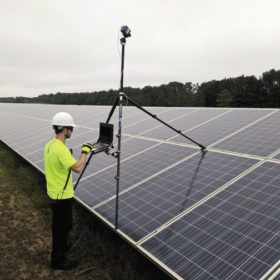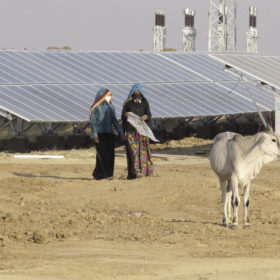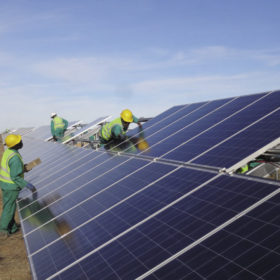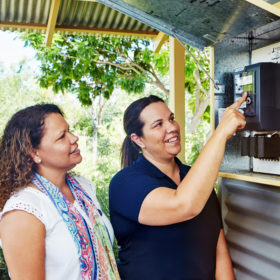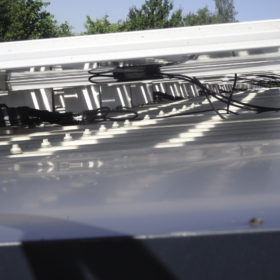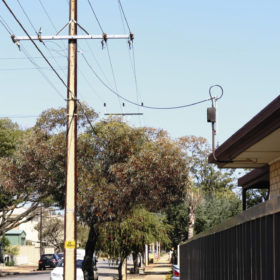EL to the field: Assessing plant health
Electroluminescence imaging is gaining traction in the field at project sites for operations and maintenance and to support PV plant mergers and acquisitions. EL testing can help PV asset owners evaluate power plant system health and can predict potential future underperformance and failures. Tristan Erion-Lorico, the head of PVEL’s module business, and dowstream business chief Andrew Sundling discuss the outlook for this enabling technology.
Right tools, right tenders: Building a quality framework in India
“Quality control is expensive.” This common misperception is largely responsible for many of the product defects, design mistakes, and bad practices in the construction and commissioning of PV plants in several markets around the world. Strong downward price pressure underlined by reverse-auctions has created a false assumption that a budget for quality control is not necessary – as PI Berlin’s work in India is revealing.
Gallium in the fight against LID
From the acquisition of IP to commercialization, the PV industry has witnessed a rapid rise of gallium-doped silicon. Researchers are testing the resulting cells’ stability while industry has begun the manufacturing phase. All this leads to a key question: Will gallium doped silicon solar modules will be the next big thing?
40 maybe the new 20
Until recently, PV plants were designed and developed to last as long as the incentive schemes underpinning their business models – feed-in tariff regimes and green certificate programs, in particular. Such schemes generally provided for a period of 20 to 25 years and the horizon of developer business models was set to match this. But as solar has matured and costs have fallen, longer operational periods are becoming the norm, argues Christophe Campistron, a partner at Everoze.
Empowering reconciliation
Western Australia’s Horizon Power is relatively unique among electric utilities – it supplies small cities, big and small agricultural and mining operations, and some of the most remote indigenous communities in the world. It has been a genuine pioneer in delivering cheaper, cleaner power through a combination of renewables and energy storage. It’s also awake to the opportunities for solar and storage to empower the Aboriginal and Torres-Strait Islander communities it serves, explains Horizon’s Roanna Edwards.
Beyond carbon blinders, deployment fever
He wrote the first book on sustainability in solar and has a second on the way. Dustin Mulvaney, a professor at San José State University, has been investigating sustainability in the solar sector and the wider energy transition for well over a decade. And by applying a broad definition of sustainability – beyond the environment to include social justice goals – he believes that the solar industry can avoid reputational risks.
pv magazine test – July 2020 results
We are happy to present the next batch of energy yield results from the outdoor test field in Xi’an, China. In this issue, we present the July 2020 results with additional analysis from George Touloupas, director of technology and quality at CEA.
Reaching for the rooftops
The solar industry is evolutionary, with costs and system efficiencies continually improving. Innovations like single axis trackers, storage, autonomous systems, bifacial modules, half-cut cells, reduced degradation, and multi MPPT inverters are helping to boost performance. Creative project owners and developers, meanwhile, continue to implement new ideas to maximize returns. This makes working as a technical solar PV consultant a fascinating prospect. With this in mind, Mathieu Labour, a partner at Everoze, reports about an exciting way to retrofit operational solar rooftop projects that was recently discovered in France.
Down in the weeds of Australia’s distribution networks
Australian electricity wires are awash with sunshine, such that network operators have threatened to up the drawbridge on further rooftop connections, while limiting rooftop PV exports to the grid. But data streams hold the key to unlocking surprising existing capacity, stabilizing voltage, and living the Aussie dream.
A north star for solar merchants
The solar industry is quite diversified in technologies and market approaches at this stage. Of course, each country is unique and has its own challenges, often demanding bespoke solutions. However, a few strategies might be more likely to work, especially where there is already plenty of renewable energy deployed. To navigate the sea of market opportunities, policymakers and stakeholders should look north.
